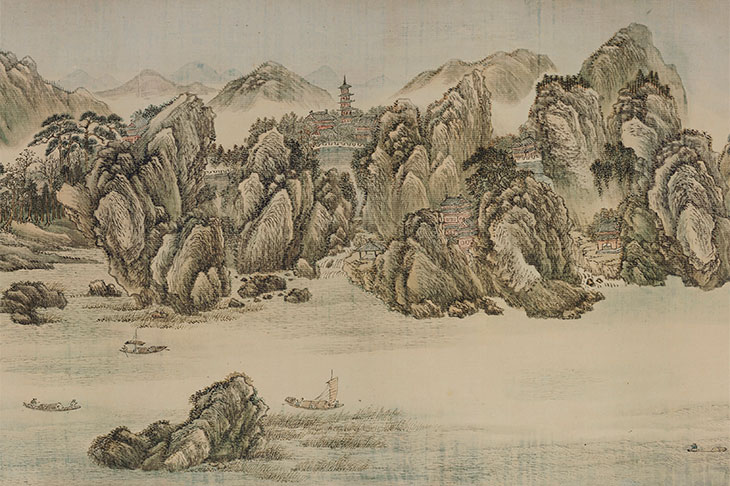A round-up of the best works of art to enter public collections recently
National Gallery, London
Self-portrait as Saint Catherine of Alexandria (1615–17), Artemisia Gentileschi
This rare and recently identified self-portrait by Artemisia Gentileschi, one of the most important artists of the Italian baroque, is one of only three known easel paintings by the artist in the UK. It was acquired by the National Gallery for £3.6m, and will undergo conservation treatment before going on display early next year. For a discussion of the acquisition’s importance, read Babette Bohn’s article for Apollo.
Self Portrait as Saint Catherine of Alexandria (c. 1615–17), Artemisia Gentileschi. © The National Gallery, London
J. Paul Getty Museum, Los Angeles
Rothschild Pentateuch (1296)
This illuminated manuscript is one of the most extensively illustrated northern European Hebrew Bibles to survive from the medieval era. The director of the Getty, Timothy Potts, describes the acquisition of ‘one of the most signal treasures’ of the Getty’s manuscripts department.
Menorah of the Tabernacle (Book of Leviticus), from the Rothschild Pentateuch (1296), France and/or Germany
National Galleries of Scotland, Edinburgh
Portrait of Max Ernst (1939), Leonora Carrington
This is the first painting by Carrington to enter the National Galleries of Scotland’s collection, bolstering its strong holdings of Surrealist work. Carrington completed the portrait of Ernst in 1939, while she was living with the German painter in Paris; it was Carrington’s parting gift to him in 1942, after they had both left France.
Portrait of Max Ernst (c. 1939), Leonora Carrington. © The estate of Leonora Carrington
Museum of Fine Arts, Boston
10,000 Miles Along the Yangzi River (1699), Wang Hui
A masterpiece of the pre-eminent 17th-century Chinese artist Wang Hui, this 16-metre-long scroll depicts a journey along the Yangzi (Yangtze), Asia’s longest river, and is replete with references to China’s poetic and artistic traditions. It has been donated to the MFA Boston by the collector Wan-go H.C. Weng, whose family has owned the work since 1875.
10,000 Miles Along the Yangzi River (detail; 1699), Wang Hui Courtesy Museum of Fine Arts, Boston
The Design Museum, Pinakothek der Moderne, Munich
African Ceramics from collection of Franz, Duke of Bavaria
With examples from societies throughout the continent, dating from the 19th and early 20th centuries, the Duke of Bavaria’s collection of African ceramics is of international significance. More than 1,300 of these works will be presented to the Design Museum; around 250 have been given as donations, while the rest are permanent loans. A major exhibition and catalogue is planned for 2019.
Vessel (19th–20th century), Bobo or Bwa, Burkina Faso. Photo: A. Laurenzo; © Die Neue Sammlung
Museum of London
Panorama of London (1815), Pierre Prévost
Pierre Prévost’s seven-metre-long watercolour canvas depicts a panoramic view of central London from St Margaret’s Church, beside Westminster Abbey. Painted by the French artist two decades before the fire of 1834, it includes a representation of the old Palace of Westminster. The work was purchased for £200,000 at a Sotheby’s auction with the help of an Art Fund grant.
A panoramic view of London, from the tower of St. Margaret’s Church, Westminster (c. 1815), Pierre Prévost
The Courtauld Gallery, London
Drawing from A Battle Scene Outside a Walled City (late 17th century), Giovanni Battista Foggini
The Courtauld has reunited two halves of a sketchbook drawing by Italian sculptor Giovanni Battista Foggini, having purchased the right-hand section from Christie’s. The complete work depicts a battle scene, and could be dated either to Foggini’s stay in Rome in 1673–76 or to his time as director of the Galleria dei Lavori in Florence from 1695.
A battle scene outside a walled city (17th century), Giovanni Battista Foggini. © The Samuel Courtauld Trust, The Courtauld Gallery, London
Uffizi Gallery, Florence
Elia nel deserto, Daniele da Volterra and Stella e Piero (1889), Vittorio Matteo Corcos
A devoted follower of Michelangelo, Daniele da Volterra is now notorious for painting loincloths and britches over the former’s nude figures in the Sistine Chapel, following an edict of the Council of Trent. The Uffizi’s acquisition, one of fewer than 10 paintings by the artist on oil or panel to have survived, is a clear demonstration of Michelangelo’s aesthetic influence on Daniele, as well as an important early example of Counter-Reformation painting, with its rare iconography of the prophet Elijah lost in meditation upon a loaf of bread. This month the Uffizi has also acquired a double-portrait by Vittorio Matteo Corcos, entitled Stella e Piero.
Elia nel deserto (1543–47), Daniele da Volterra
Städel Museum, Frankfurt am Main
Archaic Fragment (1935), Richard Oelze
The reclusive German Surrealist Richard Oelze destroyed around two-thirds of his oeuvre, so surviving large-scale canvases are rare – this new acquisition by the Städel Museum and Städelscher Museums-Verein is one of only three known to date from his years in Paris in the mid 1930s, during which he associated with figures including André Breton and Salvador Dalí. Archaic Fragment depicts an amalgam of vegetal and animal forms before a landscape; it was displayed at the ‘First Papers of Surrealism’ exhibition in Manhattan in 1942, curated by Breton and Marcel Duchamp.
Archaic Fragment (1935), Richard Oelze. © Estate of Richard Oelze
